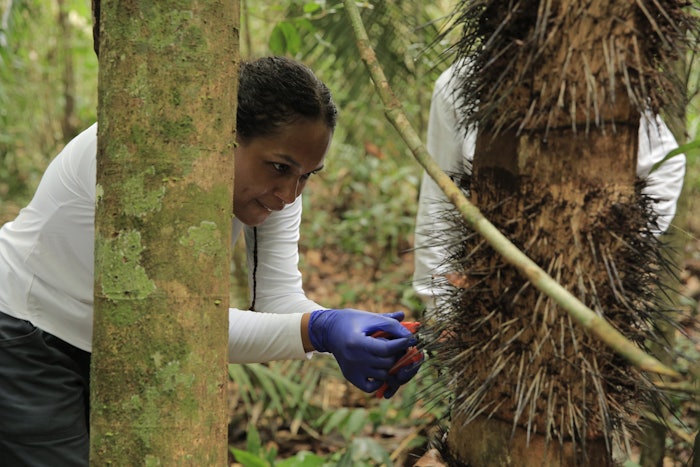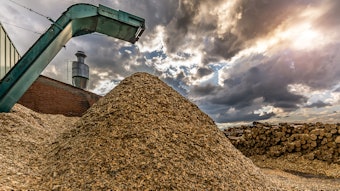
The researchers manually collected tiny samples (less than 5 g) from roots, stems, leaves, fruits, litter and soil for reproduction via biotech, thereby preserving biological resources while accessing novel natural actives.
Apoena Biotech
 “The Amazon Forest's soil, though lacking in nutrients, boasts an extensive array of microbiological diversity," said Paula Segura, leader of the bioprospecting laboratory at Apoena Biotech. "This diversity is essential for recycling organic matter and fostering the growth of diverse life forms. It achieves this through processes such as the production of plant hormones, the availability of nutrients, and even the inhibition of plant pathogens."Apoena Biotech
“The Amazon Forest's soil, though lacking in nutrients, boasts an extensive array of microbiological diversity," said Paula Segura, leader of the bioprospecting laboratory at Apoena Biotech. "This diversity is essential for recycling organic matter and fostering the growth of diverse life forms. It achieves this through processes such as the production of plant hormones, the availability of nutrients, and even the inhibition of plant pathogens."Apoena BiotechThe latest expedition took place February 26-March 1, 2024 and involved the study and bioprospecting of microorganisms from the soil and 24 regionally abundant plant species known for their production of bioactive substances.
 Key biological actives from this bioprospecting mission are expected to be available to the market beginning in September 2025.
Key biological actives from this bioprospecting mission are expected to be available to the market beginning in September 2025.The researchers manually collected tiny samples (less than 5 g) from roots, stems, leaves, fruits, litter and soil for reproduction via biotech, thereby preserving biological resources while accessing novel natural actives.
Key biological actives from this bioprospecting mission are expected to be available to the market beginning in September 2025.
 The latest expedition took place February 26-March 1, 2024 and involved the study and bioprospecting of microorganisms from the soil and 24 regionally abundant plant species known for their production of bioactive substances.Apoena Biotech
The latest expedition took place February 26-March 1, 2024 and involved the study and bioprospecting of microorganisms from the soil and 24 regionally abundant plant species known for their production of bioactive substances.Apoena Biotech“The Amazon Forest's soil, though lacking in nutrients, boasts an extensive array of microbiological diversity," said Paula Segura, leader of the bioprospecting laboratory at Apoena Biotech. "This diversity is essential for recycling organic matter and fostering the growth of diverse life forms. It achieves this through processes such as the production of plant hormones, the availability of nutrients, and even the inhibition of plant pathogens. The average annual temperatures in the Amazon Forest usually range between 22°C and 28°C, and the relative humidity is also high. This scenario makes the region conducive to developing a vast diversity of microbial species."









